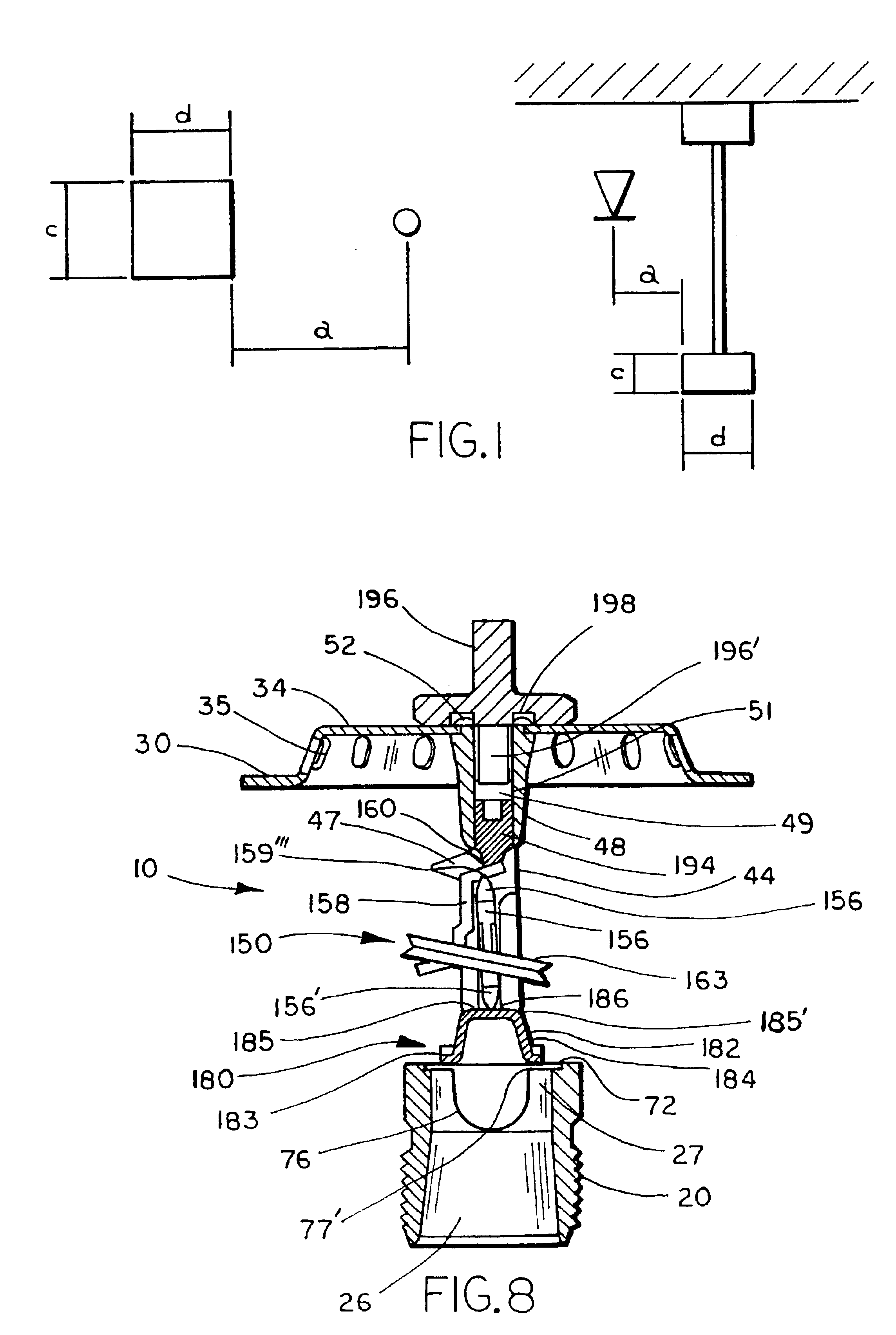Fast response sprinkler head and fire extinguishing system
a sprinkler head and fast technology, applied in the field of sprinklers, can solve the problems of ineffective firefighting in these large warehouses, water is actually delivered, and the quantity of water expelled from the sprinkler is not acceptable in this high temperature zone, so as to improve the convective heat flow, reduce costs, and simplify the installation of the sprinkler system
- Summary
- Abstract
- Description
- Claims
- Application Information
AI Technical Summary
Benefits of technology
Problems solved by technology
Method used
Image
Examples
example
[0089]In a fire sprinkler system test conducted by the Factory Mutual Research Corporation utilizing an array of upright sprinkler heads according to the present invention, and obstructed by a particular bar joist configuration, the upright sprinkler head of the present invention exhibited fire suppression performance for the FMRC standard plastic commodity.
[0090]The test was conducted under a 30 foot high ceiling, having depending therefrom a bar joist having a bottom cord approximately four inches in width. Both the ignition location (i.e., the area in which the fire was ignited) and the bar joist were positioned directly under a single upright sprinkler head of the sprinkler head array. The fluid supply line responsible for transporting fluid to the upright sprinkler head located above the ignition location was positioned perpendicular to the bar joist, while its bottom cord was positioned immediately beneath the supply pipe. The commodity tested was FMRC standard plastic commodi...
PUM
 Login to View More
Login to View More Abstract
Description
Claims
Application Information
 Login to View More
Login to View More - R&D
- Intellectual Property
- Life Sciences
- Materials
- Tech Scout
- Unparalleled Data Quality
- Higher Quality Content
- 60% Fewer Hallucinations
Browse by: Latest US Patents, China's latest patents, Technical Efficacy Thesaurus, Application Domain, Technology Topic, Popular Technical Reports.
© 2025 PatSnap. All rights reserved.Legal|Privacy policy|Modern Slavery Act Transparency Statement|Sitemap|About US| Contact US: help@patsnap.com



